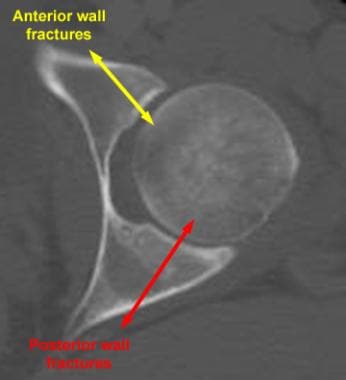

We hypothesize that this combination of injuries affects not only the postinjury hemodynamics of the patient, but the outcome of subsequent acetabular fracture treatment. ( Attribution 4.0 International (CC BY 4.To describe the clinical characteristics of combined injuries of the pelvis and acetabulum, which have not been previously described. "Imaging of Hip Pain: From Radiography to Cross-Sectional Imaging Techniques". ^ Ruiz Santiago, Fernando Santiago Chinchilla, Alicia Ansari, Afshin Guzmán Álvarez, Luis Castellano García, Maria del Mar Martínez Martínez, Alberto Tercedor Sánchez, Juan (2016).Archived from the original on 22 October 2012. "A study of the arterial supply of the human acetabulum using a corrosion casting method". ^ Itokazu M, Takahashi K, Matsunaga T, Hayakawa D, Emura S, Isono H, Shoumura S (1997).the American Academy of Orthopaedic Surgeons. "Hip Dysplasia in the Child, Adolescent and Adult". "Hip arthroscopy: evolution, current practice and future developments".



The word acetabulum literally means "little vinegar cup". This cartilage ossifies as the child grows. In infants and children, a 'Y'-shaped epiphyseal plate called the triradiate cartilage joins the ilium, ischium, and pubis. Texasetes pleurohalio), an imperforate acetabulum is present, which is not an opening, but instead resembles a shallow concave depression on each side of the pelvic girdle. In a relatively small number of dinosaurs, particularly ankylosaurians (e.g. The orientation and position of the acetabulum is one of the main morphological traits that caused dinosaurs to walk in an upright posture with their legs directly underneath their bodies. The perforate acetabulum is a cup-shaped opening on each side of the pelvic girdle formed where the ischium, ilium, and pubis all meet, and into which the head of the femur inserts. Organisms in the dinosauria clade are defined by a perforate acetabulum, which can be thought of as a "hip-socket". In reptiles and birds, the acetabula are deep sockets. Reptiles and birds Īn example of a perforated acetabulum on an ornithischian dinosaur Deep branches of the superior gluteal artery supply the superior region and the inferior gluteal artery supplies the postero-inferior region. The pubic branches supply the pelvic surface of the acetabulum. The acetabular branch of the obturator artery supplies the acetabulum through the acetabular notch. Friction inside a normal hip is less than one-tenth that of ice gliding on ice. The well-fitting surfaces of the femoral head and acetabulum, which face each other, are lined with a layer of slippery tissue called articular cartilage, which is lubricated by a thin film of synovial fluid. This is what holds the head of the femur securely in the acetabulum. The notch is converted into a foramen by the transverse acetabular ligament through the foramen nutrient vessels and nerves enter the joint. The acetabulum is also home to the acetabular fossa, an attachment site for the ligamentum teres, a triangular, somewhat flattened band implanted by its apex into the antero-superior part of the fovea capitis femoris. Its counterpart in the pectoral girdle is the glenoid fossa. The rest of the acetabulum is formed by a curved, crescent-moon shaped surface, the lunate surface, where the joint is made with the head of the femur. At the lower part of the acetabulum is the acetabular notch, which is continuous with a circular depression, the acetabular fossa, at the bottom of the cavity of the acetabulum. It is bounded by a prominent uneven rim, which is thick and strong above, and serves for the attachment of the acetabular labrum, which reduces its opening, and deepens the surface for formation of the hip joint. The rest is formed by the pubis, near the midline. The ilium forms the upper boundary, providing a little less than two-fifths of the structure of the acetabulum. Contributing a little more than two-fifths of the structure is the ischium, which provides lower and side boundaries to the acetabulum. There are three bones of the os coxae (hip bone) that come together to form the acetabulum. The head of the femur meets with the pelvis at the acetabulum, forming the hip joint. The acetabulum ( / ˌ æ s ɪ ˈ t æ b j ə l ə m/), also called the cotyloid cavity, is a concave surface of the pelvis.


 0 kommentar(er)
0 kommentar(er)
